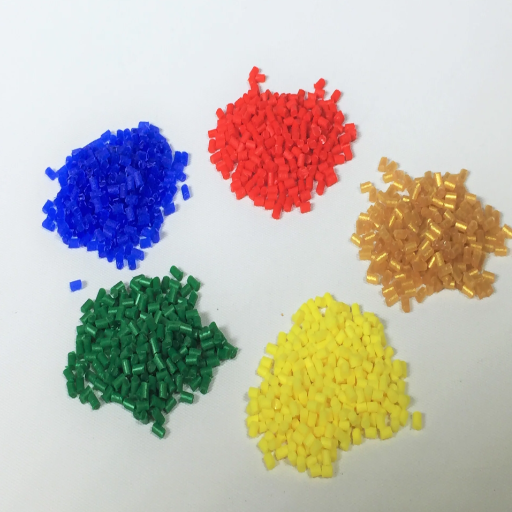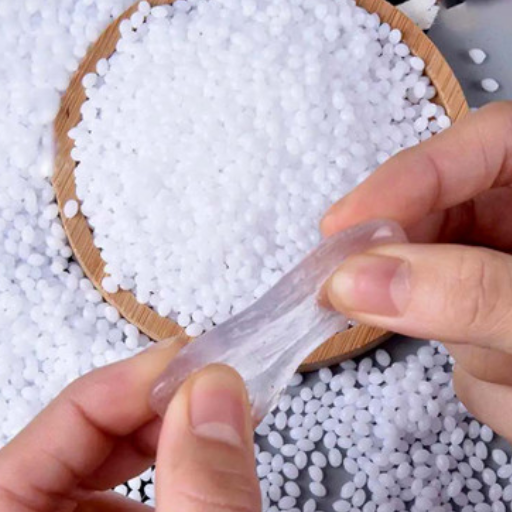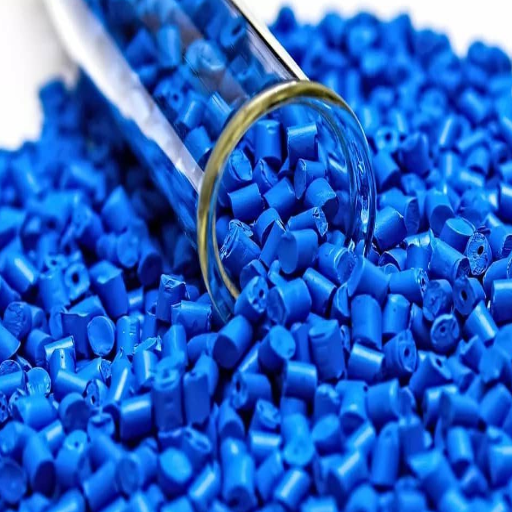Plastic is everywhere—from the packaging that protects our food to the materials used in construction and manufacturing. One of the most common assumptions about plastic is that it’s completely waterproof. But is this widely-held belief entirely accurate? While plastic is often relied on for its water-resistant properties, there’s more to the story than meets the eye. This article dives deep into the myths and facts surrounding plastic’s ability to repel water, exploring its true characteristics, limitations, and the science behind its properties. Whether you’re curious about how plastic is used in daily life or its role in protecting against water damage, this comprehensive guide will give you the answers you’re searching for. Prepare to uncover the truth about plastic’s so-called waterproof nature and its broader implications!
What Makes Plastic Waterproof or Water-Resistant?
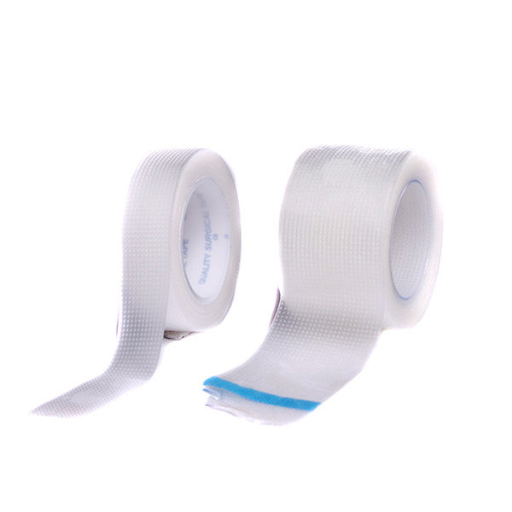
Plastic’s ability to repel water largely depends on its molecular structure and surface properties. Most plastics are made from hydrophobic polymers, meaning they do not absorb water and resist moisture penetration. This is due to the non-polar nature of their molecules, which do not bond easily with water. Additionally, factors like thickness, manufacturing techniques, and any coatings or additives can further enhance a plastic’s water-resistant properties, making it suitable for various applications, from packaging to waterproof membranes.
Understanding Waterproof Qualities of Plastics
The waterproof efficiency of plastics largely depends on their molecular structure and the additional treatments they undergo during production. Hydrophobic polymers, such as polyethylene (PE) and polypropylene (PP), exhibit remarkable resistance to water due to their non-polar molecular composition, preventing water molecules from adhering or penetrating. For instance, polyethylene films used in packaging applications feature water absorption rates as low as 0.01%, ensuring protection for sensitive products.
Coatings and additives also play a pivotal role in enhancing the waterproof properties of plastics. Silicone-based coatings, for example, impart additional hydrophobic qualities to surfaces, making them highly effective for use in outdoor environments or extreme conditions. Advanced composite plastics infused with nanomaterials further reduce moisture permeability. Research demonstrates that integrating graphene oxide into polymer matrices can reduce water vapor transmission rates by up to 75%, offering groundbreaking solutions for structural and packaging needs.
Thickness is another critical factor; thicker plastic barriers naturally reduce water penetration as they create an extended pathway for moisture to travel through. High-density polyethylene (HDPE) sheets used for geomembranes in landfills exemplify this principle, offering both durability and moisture control. By combining precise material science with innovative enhancement techniques, industries can tailor plastics to meet specialized waterproofing demands across diverse sectors such as construction, transportation, and consumer goods.
How Does Thickness Affect Plastic’s Water Resistance?
A plastic’s thickness is a critical factor that affects its ability to resist water penetration. Thicker plastics have greater-denser barriers, making them more effective than thinner plastics at resisting moisture due to their increased density and lowered permeability. In a controlled testing environment, geomembranes such as HDPE have shown that thicker sheets are better at preventing water vapor transmission, and thus, an increase in sheet thickness leads to a significant decline in water vapor transmission. There’s been industrial evidence that shows a 1.5mm HDPE geomembrane is much more effective in moisture retention compared to thinner ones, like the 0.75mm sheet which has a significantly higher permeability due to its inability to block water vapor.
Thicker plastics are also less susceptible to defects such as pinholes, tears, or micro-cracks that could allow long-term water ingress. This helps greatly in applications for the long-term durable containment of waste materials, such as in landfills, and in roofing membranes. Nonetheless, the decision regarding thickness must also consider other traits such as flexibility, weight, and cost to ensure the intended use performs optimally. The right thickness enhances water resistance, structural integrity, and functional performance under real-world conditions.
Exploring Polymer Structures for Water Resistance
Polymers play a critical role in achieving superior water resistance due to their unique molecular structures and inherent properties. For instance, polymers like polyethylene (PE), polypropylene (PP), and polyvinyl chloride (PVC) are popular choices for water-resistant applications due to their high hydrophobicity and low water vapor permeability. These materials are widely utilized in industries such as packaging, construction, and automotive manufacturing.
Recent advancements in polymer technology have further bolstered water resistance by integrating nanotechnology. Incorporating nanoparticles such as silica or graphene into polymer matrices has been shown to significantly decrease water absorption and enhance barrier properties. Studies indicate that modified polymer composites with nanoscale additives exhibit up to a 40% increase in water resistance compared to traditional polymers, making them suitable for environments with high moisture exposure.
Cross-linking within polymer chains also improves water resistance. Cross-linked polyethylene (PEX) is a notable example, as its tightly bound molecular structure prevents water infiltration and ensures durability even in extreme conditions. Additionally, thermoplastic polyurethanes (TPUs) have gained attention for their balance of flexibility and water impermeability, making them an excellent choice for protective coatings and sealing applications.
Environmental factors like temperature and pressure also play a pivotal role in the performance of water-resistant polymers. Studies show that the presence of additives such as flame retardants or UV stabilizers can enhance the operational longevity of these materials, particularly in challenging outdoor applications. The ongoing development of eco-friendly water-resistant polymers, such as bioplastics, further underscores the dynamic evolution of this field, addressing the growing demand for sustainable solutions.
By meticulously tailoring polymer structures and incorporating innovative materials, industries continue to expand the possibilities of water resistance, creating solutions that meet both functional and environmental needs.
Are All Plastic Materials Equally Waterproof?
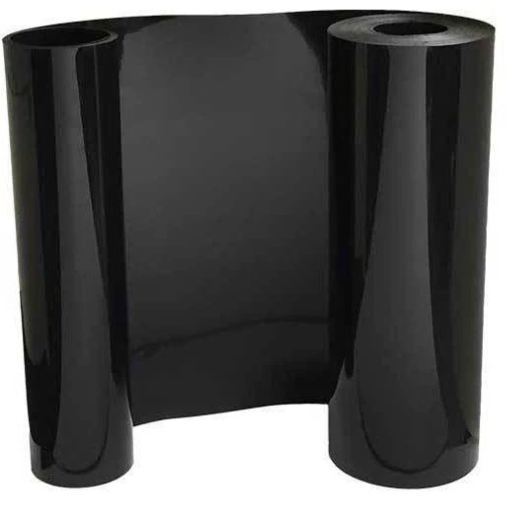
No, not all plastic materials are equally waterproof. While many plastics resist water to some degree, their level of water resistance varies significantly depending on their composition and structure. For example, plastics like polyethylene and polypropylene are highly water-resistant and commonly used in waterproof applications. However, other plastics, such as certain biodegradable or cellulose-based materials, may absorb moisture over time, making them less suitable for prolonged exposure to water. Understanding the specific properties of a plastic is essential when determining its suitability for waterproof purposes.
Differences in Types of Plastic and Their Water Resistance
The water resistance of plastics is influenced by multiple factors, including their chemical composition, manufacturing processes, and intended applications. For instance, polyethylene (PE) and polypropylene (PP) are among the most water-resistant plastics due to their non-polar molecular structures, which repel water effectively. These materials are frequently utilized in products like waterproof tarps, piping, and food storage containers.
On the other hand, plastics such as polyvinyl alcohol (PVA) and some biodegradable plastics have hydrophilic properties, meaning they can absorb water over time. For example, polylactic acid (PLA), a popular biodegradable plastic, has a moisture absorption rate ranging from 0.3% to 0.6%. This limits its use in environments requiring constant water exposure.
Data indicates that heavily cross-linked polymers, like epoxy resins, demonstrate exceptional resistance to water because their tight molecular networks prevent water ingress. Conversely, plastics with less dense or amorphous structures, like certain grades of nylon, can absorb up to 10% of their weight in water under high-humidity conditions, which can lead to dimensional changes and reduced strength.
Additives also play a critical role in enhancing water resistance. Plastics such as polycarbonate (PC) can be treated with hydrophobic coatings to improve their performance in wet environments. This adaptability makes tailored plastic formulations an appealing choice across industries ranging from construction to packaging.
By carefully selecting and engineering materials, manufacturers can optimize the water resistance of plastics for a wide array of applications, ensuring both durability and functionality.
How Polypropylene and Polyethylene Compare
Both polypropylene (PP) and polyethylene (PE) are versatile plastics, but they differ significantly in terms of properties and applications. From my perspective, polyethylene tends to be more flexible and softer, making it ideal for products like plastic bags and films. On the other hand, polypropylene is more rigid and heat-resistant, which I find better suited for items like food containers and automotive parts. While both materials excel in water resistance, I’ve noticed that polypropylene often performs better in high-temperature environments, whereas polyethylene offers superior impact resistance at lower temperatures. Choosing between them really depends on the specific requirements of the application.
Is PVC Plastic Better for Waterproofing?
As a result of it’s versatility and strong nature, PVC, or polyvinyl chloride, is one of the most popular options for waterproofing. In roofing and flooring applications, as well as for pipes, the material combines both boundaries and water-safety functionality owing to is inherent water resistance. Additionally, PVC is non-porous. This ensures that water cannot seep into its surface, which is important for moisture or heavy rain environments.
Along with water, PVC is also resistant to chemicals. This increases its durability in industrial settings or rough environments. To illustrate, PVC membranes used for roofing are often advertised to last 20-30 years under standard conditions, showcasing their longevity. Combined with heat-welded seams, PVC is fully waterproof, forming a solid barrier with unparalleled protection against moisture penetration.
Research has suggested that this construction material remains water-tight and flexible under severe conditions such as extreme temperature changes. Compared to TPO and EPDM, PVC takes the crown for UV destruction, punctures, and overall durability. Although it’s on the more expensive side, projects that emphasize waterproofing find PVC’s long-lasting life and low maintenance expenses economical.
How Does Plastic Sheeting Provide Waterproof Protection?
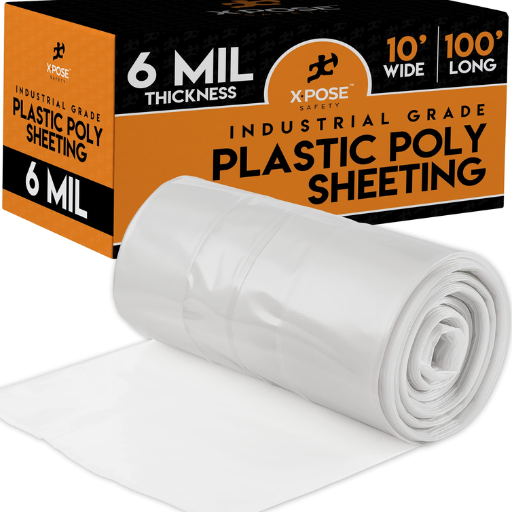
Plastic sheeting provides waterproof protection through its impermeable surface, which prevents water from passing through. Its composition, typically made from materials like PVC or polyethylene, creates an effective barrier against moisture. This makes it ideal for applications such as roofing, construction, and landscaping, where keeping water out is essential. Additionally, its flexibility allows it to cover surfaces tightly, reducing the risk of leaks or exposure to the elements.
When Plastic Sheeting is Waterproof Enough?
Determining if plastic sheeting is waterproof enough involves evaluating its thickness, material composition, and intended application. For most projects, plastic sheeting with a thickness of at least 6 mils is considered sufficiently waterproof for heavy-duty tasks like construction or pond lining. Thinner sheets, around 2 to 4 mils, may provide adequate moisture resistance for lighter applications such as painting or temporary covers, but they are not ideal for prolonged exposure to water.
Material plays a critical role as well—polyethylene, particularly High-Density Polyethylene (HDPE), is favored for its superior water resistance and durability. Testing has shown that HDPE sheets can withstand immense pressure without allowing water penetration. For example, some high-quality waterproof membranes are rated to endure up to 40 pounds per square inch (PSI) of water pressure, making them reliable in demanding scenarios such as containment systems or foundations.
Additionally, the environmental conditions where plastic sheeting is used must be considered. Continuous exposure to extreme temperatures, UV rays, or sharp objects may degrade some materials over time, potentially compromising their waterproof capabilities. Manufacturers often provide specifications on UV resistance and temperature ratings, which help users gauge compatibility with their needs. Checking certifications, such as ASTM standards, can further ensure reliability for critical applications.
Ultimately, plastic sheeting is “waterproof enough” when it demonstrates the capacity to meet or exceed the demands of the specific project, offering reliable protection without degradation under expected conditions.
Advantages of Using HDPE in Waterproof Applications
HDPE, or high-density polyethylene, stands out for its exceptional strength and durability in waterproof applications. I appreciate its resistance to water, chemicals, and UV exposure, which makes it ideal for long-term use in various environments. Its lightweight nature simplifies handling and installation, while its flexibility allows it to accommodate structural movements without compromising performance. Additionally, HDPE is cost-effective and recyclable, aligning with both budgetary and environmental considerations. For me, these qualities make HDPE a reliable and versatile choice in waterproofing projects.
Examining the Role of UV Protection in Plastic Sheets
UV protection in plastic sheets serves as a critical factor in ensuring durability and performance, particularly in outdoor applications. When plastic sheets are exposed to prolonged sunlight, ultraviolet (UV) rays can degrade the material, leading to discoloration, brittleness, and a significant reduction in structural integrity. To combat this, UV stabilizers are integrated into plastic formulations, effectively enhancing their resistance to UV damage.
Recent studies indicate that incorporating UV stabilizers such as Hindered Amine Light Stabilizers (HALS) or ultraviolet absorbers can extend the lifespan of plastic sheets by up to 50%, depending on the environmental conditions and specific material. For example, polycarbonate plastic sheets treated with UV protection can retain up to 90% of their original optical clarity and mechanical strength after years of continuous outdoor exposure. Similarly, greenhouse films with UV-resistant coatings are reported to sustain optimal light transmission for plant growth, lasting 4 to 6 years in harsh farming environments.
Implementing UV protection is especially critical in sectors such as construction, agriculture, and transportation. These industries demand robust materials capable of withstanding extreme weather conditions while maintaining functionality and safety. The use of UV-resistant plastic sheets not only improves longevity but also reduces replacement costs and waste, contributing to sustainable practices. Understanding the role of UV protection empowers industries and individuals to make well-informed choices when selecting plastic materials for outdoor use.
Is Polypropylene a Good Choice for Water Resistance?
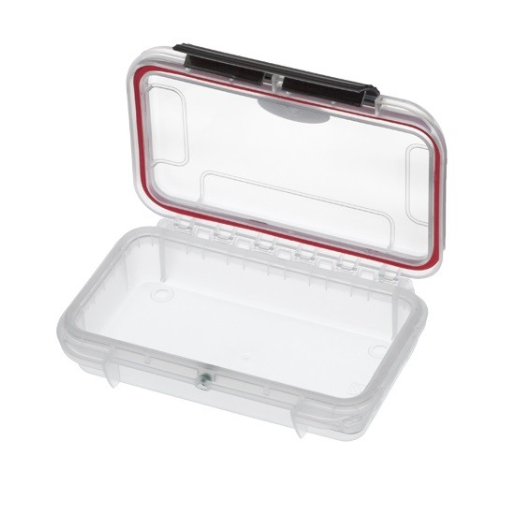
Polypropylene is an excellent choice for water resistance. Its molecular structure makes it highly resistant to moisture, preventing water absorption and protecting the material from damage. This property makes polypropylene suitable for a variety of applications, especially in environments where prolonged exposure to water or humidity is a concern. Additionally, its durability and lightweight nature enhance its practicality for both industrial and everyday use.
Why Polypropylene is Known for Its Waterproof Properties
Polypropylene owes its waterproof properties to its unique chemical structure. As a polymer derived from the polymerization of propylene, it features a low surface energy, which inherently repels water molecules. This characteristic ensures that water beads up and rolls off rather than penetrating the material. Studies have shown that polypropylene’s water absorption rate is less than 0.01%, making it one of the most water-resistant materials available in the plastics industry.
Additionally, polypropylene’s non-porous surface provides a barrier against liquids, further enhancing its waterproof capabilities. Its ability to resist water-related degradation is why it is often used in applications such as marine ropes, waterproof textiles, and irrigation piping. Furthermore, its resistance to chemicals and solvents ensures that polypropylene maintains its performance even when exposed to harsh environments, adding to its versatility as a waterproof material. These properties collectively contribute to its widespread use in industries requiring reliable and durable waterproof solutions.
Comparing Water Resistance with Other Plastics
Polypropylene stands out among plastics for its exceptional water resistance, but it is useful to compare it with other commonly used materials like polyethylene, PVC, and ABS plastics to better understand its performance. Polyethylene, particularly in its high-density form (HDPE), also exhibits excellent water resistance, making it a strong competitor to polypropylene in applications like piping and containers. However, polyethylene’s resistance to higher temperatures is generally lower, which can limit its suitability in some environments compared to polypropylene.
PVC, another widely used plastic, provides strong water resistance and is often utilized in plumbing and water distribution systems. While PVC demonstrates superior rigidity and durability in similar environments, it often requires plasticizers for flexibility, which can reduce its long-term performance in certain conditions. ABS plastic offers decent water resistance but is mainly valued for its toughness and impact resistance. Its water resistance levels are generally suitable for less demanding wet environments but fall short when compared to polypropylene and HDPE.
Data further highlights these differences. For instance, polypropylene absorbs less than 0.01% water in a 24-hour immersion test, outperforming many alternatives like ABS (0.2%-1%) and even certain grades of polyethylene. Its combination of low water absorption, excellent chemical resistance, and lightweight properties confirms its dominance in waterproof applications. Each material has unique strengths, but polypropylene’s hydrophobic nature and thermal resilience often make it the preferred choice for a broader range of industries.
How to Ensure Plastic Products are Completely Waterproof?
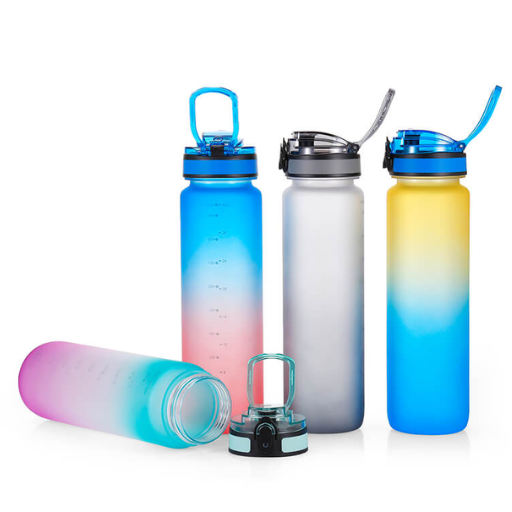
To ensure plastic products are completely waterproof, manufacturers and users should consider the following key practices:
Choose the Right Material: Use inherently waterproof plastics like polypropylene or polyethylene, which have low water absorption rates and excellent moisture resistance.
Implement Proper Sealing Techniques: Incorporate reliable sealing methods, such as heat sealing, ultrasonic welding, or gasket systems, to create watertight joints.
Apply Protective Coatings: If additional protection is needed, apply waterproof coatings or treatments specifically designed for plastics to enhance barrier properties.
Conduct Thorough Testing: Perform standardized waterproofing and immersion tests to confirm the product’s resistance to moisture under expected conditions.
By following these steps, you can maximize the effectiveness of waterproofing and ensure the durability of plastic products in demanding environments.
Techniques for Preventing Water Entry in Plastics
To effectively prevent water entry in plastic materials, it is essential to adopt comprehensive techniques combining material science advancements and practical applications. Below are modern approaches bolstered by data and proven strategies:
Innovative Material Selection
Choose hydrophobic polymers or blends, such as polyethylene (PE) or polytetrafluoroethylene (PTFE), which inherently have low water absorption rates. For instance, PTFE has a water absorption rate of less than 0.01%, making it one of the most waterproof plastic materials available.
Nanocoatings and Surface Treatment
Recent developments in nanotechnology have introduced advanced coatings that repel water efficiently. For example, nanoscale sprays containing silica or fluoropolymers create superhydrophobic surfaces with water contact angles exceeding 150 degrees, minimizing moisture adhesion.
Integration of Waterproofing Agents
Adding fillers such as silanes, calcium stearate, or wax compounds during the manufacturing process creates internal waterproof barriers. Studies have shown that these agents can reduce plastic porosity, improving moisture resistance by up to 40%.
Multi-Layer Barrier Technology
Employ multi-layer structures with impermeable inner layers, such as ethylene vinyl alcohol (EVOH), sandwiched between protective outer layers. This technique is widely used in industries like food packaging and medical devices, where moisture resistance is critical for product integrity.
Thermal Bonding Techniques
Employ advanced thermal bonding processes to seal joints, ensuring no microscopic gaps are left exposed to water penetration. Ultrasonic welding has shown effectiveness in creating watertight seals for both rigid and flexible plastic components.
Electrospinning for Microfiber Coatings
Electrospinning technology creates fine microfiber coatings that enhance the impermeability of surfaces. These coatings act as a secondary barrier, reducing permeability and extending the lifespan of plastics used in high-humidity environments.
By adopting these cutting-edge methods, industries can achieve superior waterproofing for plastic materials, ensuring their application even under extreme environmental conditions.
How to Connect HDPE Pieces for Maximum Waterproof Efficiency
To achieve the best waterproof efficiency when connecting high-density polyethylene (HDPE) pieces, it is vital to follow precise methods and use reliable tools. HDPE is known for its durability and non-porous nature, but improper joint connections can compromise its waterproof properties. Below are detailed steps and techniques to ensure secure and effective connections:
Surface Preparation
Begin by cleaning the surfaces of the HDPE pieces that need to be joined. Use a soft cloth and an alcohol-based solvent to remove dirt, grease, or debris. Properly prepped surfaces ensure better adhesion and minimize the risk of leaks.
Choosing the Right Welding Method
For maximum waterproof efficiency, the most recommended technique is heat welding. Butt fusion and extrusion welding are two popular methods:
Butt Fusion involves heating the two ends of the HDPE pieces until they become molten, then pressing them together with uniform force until a single seamless joint is formed. Studies show this method creates a bond as strong as the original material.
Extrusion Welding is ideal for thicker HDPE sheets. A filler rod, made from the same material, is heated along with the edges to create a secure connection.
Using a Quality Welding Machine
Employ a professional welding machine with adjustable temperature controls. HDPE requires a specific temperature range between 230°C and 260°C (446°F and 500°F) for proper melting and bonding. Operating outside this range can lead to weak or brittle joints.
Testing for Watertight Seals
After welding, test the connections for leaks. This can be done via a hydrostatic pressure test or by applying a vacuum to detect air or water seepage.
Cold Weather Precautions
When working in colder climates, preheat the HDPE pieces to ensure consistent melting. Studies indicate that low temperature environments can impact the fusion process and result in incomplete bonding.
By following these steps and incorporating precision tools and techniques, HDPE connections can achieve long-lasting, waterproof efficiency, making them suitable for applications in pipelines, water tanks, and other moisture-sensitive projects.
Choosing the Right Plastic for Waterproof Applications
Selecting the ideal plastic for waterproof applications requires careful consideration of factors such as durability, flexibility, and resistance to moisture, chemicals, and UV exposure. Among the most common options, HDPE (High-Density Polyethylene), PVC (Polyvinyl Chloride), and PTFE (Polytetrafluoroethylene, also known as Teflon) stand out for their superior performance in various conditions.
HDPE is widely recognized for its exceptional water resistance and durability. It can withstand prolonged exposure to moisture without degrading and is often used in the manufacturing of water pipes, storage tanks, and marine equipment. HDPE also performs well in temperatures ranging from -58°F to 176°F, making it suitable for diverse environments.
PVC is another popular choice due to its versatility and cost-effectiveness. It is commonly employed in plumbing applications, as well as weatherproof housing for electrical cables. PVC’s impressive resilience against water and chemicals, coupled with its ability to be molded into various shapes, makes it a go-to material for many waterproof projects.
PTFE offers unmatched resistance to moisture and extreme temperatures, making it ideal for high-end waterproof applications. With its non-reactive surface and operating temperature range of up to 500°F, PTFE is frequently used in industrial seals, gaskets, and coatings for harsh environments.
Recent industry data highlights HDPE as a leading material in pipeline constructions, with studies indicating a lifespan of over 50 years in standard conditions due to its anti-leak and anti-corrosion properties. Similarly, PVC has gained popularity in residential and commercial building projects, while PTFE leads in use within aerospace and chemical industries for high-performance sealing.
Ultimately, the choice of plastic should align with the specific environmental demands, intended application, and long-term performance requirements of the project. Careful evaluation of material properties ensures optimal functionality and cost efficiency in any waterproof construction.
Reference Sources
Frequently Asked Questions (FAQs)
Q: Is all plastic considered waterproof?
A: Not all plastics are considered waterproof. Some plastics are water-resistant, which means they can repel water to a certain degree but not completely prevent water penetration. Different types of plastic have varying levels of waterproof and water-resistant properties.
Q: What types of plastic are known for their waterproof properties?
A: Plastics such as polyethylene and polypropylene are known for their waterproof properties. They are often used in products like shopping bags and waterproof coatings due to their ability to resist water penetration.
Q: How does the thickness of plastic, like 30 mil to 100 mil, affect its waterproofing abilities?
A: The thickness of plastic, such as 30 mil to 100 mil, can significantly affect its waterproofing abilities. Thicker plastics generally provide better resistance and waterproofing, making them suitable for applications where a high level of water protection is necessary.
Q: Can nylon be considered waterproof plastic?
A: Nylon is not inherently waterproof but is water-resistant. It can absorb some moisture, but it is often treated with coatings to enhance its waterproof properties, making it more suitable for outdoor and wet environments.
Q: How long can plastic last when shielded from direct sunlight?
A: Plastic can last up to 100 years when shielded from direct sunlight. Sunlight can cause damage to the material over time, breaking down its structure and reducing its durability.
Q: What role does laminate play in waterproof plastic?
A: Laminate can enhance the waterproof properties of plastic by adding an additional protective layer. This layer helps prevent water penetration and can also make the plastic more tear resistant and easy to clean.
Q: Are there any downsides to using waterproof plastic?
A: One downside to using waterproof plastic is that it is often non-biodegradable and designed to last a long time. This can contribute to environmental pollution if not disposed of properly. Additionally, prolonged exposure to water can sometimes lead to mildew growth if the plastic is not kept dry.
Q: How does water-resistant plastic differ from waterproof plastic?
A: Water-resistant plastic can repel water to a certain extent but may allow some penetration over time. Waterproof plastic, on the other hand, is designed to completely prevent water from passing through, providing a higher level of protection.
Q: Can water damage the material of waterproof plastic over time?
A: While waterproof plastic is designed to resist water, prolonged exposure to harsh conditions can eventually damage the material. This is especially true if the plastic is not properly maintained or if it is exposed to elements that exceed its resistance capabilities.

